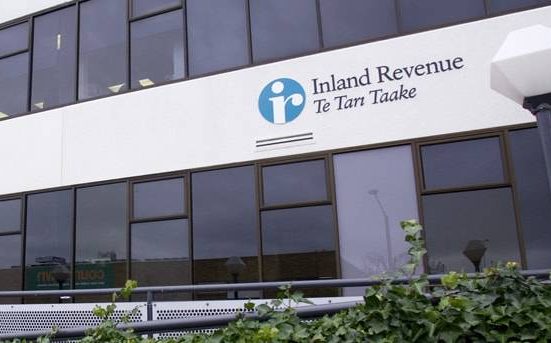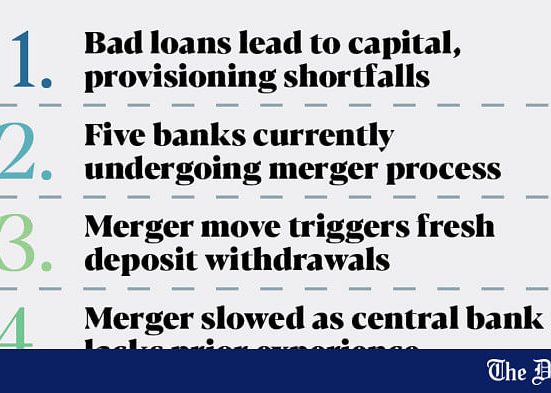While challenges remain, practical use cases for crypto are emerging across sectors.
Crypto adoption refers to the widespread use of digital assets across various sectors, including individuals, investors, businesses and governments. This can involve trading, payments, remittances and the use of blockchain-based financial services. Key measures of adoption include wallet creation, transaction volume, institutional participation and regulatory engagement.
This article examines the state of crypto adoption in 2025 by analyzing where growth is occurring and what is driving it. It explores global trends, regional variations, and the key factors influencing adoption, including economic conditions, legal clarity and access to digital infrastructure.
What Is Crypto Adoption?
The term “crypto adoption” refers to the growing integration of cryptocurrencies such as bitcoin, solana, and USDT stablecoins into everyday financial and digital activities. This can include using crypto for payments, investment, remittances or accessing decentralized applications. Adoption also extends to businesses accepting crypto, financial institutions offering related services and governments exploring blockchain for public infrastructure.
As more people and organizations engage with digital assets, these technologies become embedded in broader economic systems. Growth in adoption is often supported by regulatory clarity, user-friendly platforms and increased awareness of crypto’s potential benefits and risks.
Key Drivers Behind Crypto Adoption Rates
Several factors are influencing the pace and direction of crypto adoption around the world. Economic conditions, regulatory clarity and access to digital infrastructure remain crucial factors in determining whether individuals and institutions engage with digital assets. In higher-income regions like North America, institutional demand and regulated investment products play a significant role, whereas in emerging markets, adoption is often driven by the need for financial access and currency stability. This section examines how these and other factors influence adoption rates across various regions and user groups.
Financial Inclusion
Crypto is gaining ground in regions where access to traditional banking remains limited. In Sub-Saharan Africa, where many individuals lack formal financial services, digital assets offer an alternative for saving, sending money and conducting business. Countries like Nigeria and Ethiopia are witnessing a growing adoption of stablecoins to manage inflation and navigate foreign exchange shortages. At the same time, crypto platforms enable faster and lower-cost payments both domestically and across borders.
Decentralized finance is also expanding access to credit and savings tools, decreasing the need for traditional banks. These services are especially relevant in areas underserved by legacy systems. As adoption grows, crypto is playing a larger role in promoting financial inclusion and helping users participate more fully in the global economy.
Crypto As An Inflation Hedge
In economies where the value of local currency is rapidly declining, crypto, particularly bitcoin, is increasingly viewed as a hedge against inflation. Unlike fiat money, which central banks can expand, bitcoin has a fixed supply, offering scarcity in contrast to inflationary monetary policy. This has made it attractive in countries facing persistent inflation, where individuals seek to preserve their purchasing power by investing in assets that are less vulnerable to devaluation.
Tokenization Of Everything
Representing real-world assets as digital tokens on a blockchain is opening new pathways for ownership, investment and liquidity. This process, known as tokenization, enables assets like real estate, stocks or commodities to be divided into tradable units that can be transferred efficiently across digital platforms. It lowers barriers to entry by allowing fractional ownership and improves transparency through on-chain recordkeeping.
From financial institutions issuing tokenized bonds to platforms enabling the trade of tokenized art or infrastructure, this approach is reshaping how value is stored and transferred. As more assets are integrated into blockchain networks, tokenization is playing an increasingly significant role in modernizing financial systems.
Examining Global Crypto Adoption
In October 2024, Chainalysis, a leading blockchain analytics firm, released a comprehensive report on global crypto adoption. The findings revealed significant regional differences, influenced by factors that include economic conditions, regulatory frameworks and access to digital infrastructure.
In North America, particularly the United States and Canada, adoption is primarily driven by institutional investors. The United States ranks fourth on the Global Crypto Adoption Index, with the majority of its transaction volume coming from transfers over one million dollars. The launch of spot bitcoin exchange-traded products has significantly increased institutional interest and contributed to the growth of the market.
In Asia, India, Vietnam and the Philippines lead in grassroots adoption. This region has seen high levels of engagement from retail users who rely on digital assets for remittances, savings and investment. In Sub-Saharan Africa and Latin America, adoption is often linked to economic instability and limited access to traditional banking. Countries like Nigeria and Brazil are turning to stablecoins and decentralized finance platforms to manage inflation and facilitate cross-border payments. These trends reflect the growing role of crypto as a tool for financial access and economic resilience across diverse global markets.
The Role Of Large Institutions And Governments
In the United States, legislation is in progress. Known as the GENIUS Act and the CLARITY Act, these bills aim to establish a defined regulatory environment for digital assets. These efforts have encouraged financial institutions to develop products to engage more directly with blockchain infrastructure.
Some governments have taken a restrictive stance, while others are exploring regulated pathways. In China, crypto trading and mining remain banned, yet interest in bitcoin has persisted as investors seek alternatives to the stock and property markets. Many are using offshore platforms, informal peer-to-peer channels or crypto exchanges in Hong Kong to gain exposure.
Barriers To Mass Adoption
While interest in crypto continues to rise, key obstacles still stand in the way of broader adoption. Market volatility remains a concern, with sharp price swings deterring risk-averse users and institutions. Security vulnerabilities, including scams, hacks and the loss of private keys, also contribute to hesitation among potential users. Additionally, regulatory uncertainty in many jurisdictions creates confusion regarding compliance, taxation and the legal status of digital assets. The following section explores these and other barriers that must be addressed for crypto to gain broader acceptance across mainstream financial systems and consumer markets.
Volatility
Frequent and dramatic price swings remain one of the most visible challenges facing crypto adoption. Unlike traditional currencies, which are generally stable over short periods, the value of assets like bitcoin or solana can change significantly in a matter of hours. This unpredictability makes it difficult for individuals to use crypto for everyday transactions and discourages businesses from accepting it as a form of payment.
While some investors see opportunity in these fluctuations, many users prioritize stability and reliability in their financial tools. Until the market matures and prices become more predictable, volatility will continue to limit the broader use of this technology.
Security Risks
Managing crypto securely can be challenging, especially for new users. Unlike traditional financial systems, where banks handle security and fraud prevention, crypto users are often responsible for safeguarding their own wallets and private keys. This increases the risk of loss due to human error, phishing attacks or technical vulnerabilities. Hacks targeting exchanges and decentralized platforms have resulted in financial losses over the years.
The absence of consistent security standards across the industry adds another layer of uncertainty. Without more explicit protections and more accessible tools, concerns around safety will remain a barrier to broader adoption.
Regulatory Uncertainty
Unclear or inconsistent regulations across jurisdictions continue to limit mass crypto adoption. Without well-defined rules, businesses face challenges launching compliant products, and users remain uncertain about legal protections, tax obligations and the status of digital assets. This lack of clarity hinders innovation and discourages institutional participation, particularly in regions where policies are frequently shifting or remain underdeveloped. As long as regulatory frameworks vary widely across jurisdictions, uncertainty will remain a key obstacle to mainstream adoption.
Expert Predictions On Crypto Adoption Outlook
Many experts see regulatory clarity as the key to unlocking the next phase of crypto adoption. Paul Grewal, Chief Legal Officer at Coinbase, stated, “We can get comprehensive legislation and get it done by August,” pointing to cooperation among the House, Senate and White House. Summer Mersinger, CEO of the Blockchain Association and former CFTC commissioner, added, “The United States urgently needs clear, comprehensive, and carefully designed rules for digital assets,” reinforcing the call for consistent policy frameworks.
Others see bitcoin’s potential reaching well beyond traditional financial markets. Alex Gladstein of the Human Rights Foundation emphasized that the technology is “collaborative, decentralized and aligns well with the human rights movement,” highlighting its role in advancing global financial access and individual freedom.
Real-Life Examples Of Crypto Adoption
Crypto is quickly becoming a tool for practical problem-solving. In June 2025, the U.S. Federal Housing Finance Agency issued a directive instructing Fannie Mae and Freddie Mac to consider crypto as a reserve asset in mortgage risk assessments. This change allows borrowers to include eligible digital assets held on regulated exchanges when applying for conventional home loans.
In Africa, Gridless Compute is using bitcoin mining to support rural energy infrastructure. By partnering with local power producers, Gridless runs mining equipment only when there is excess renewable energy. This approach helps monetize otherwise unused electricity, creating additional revenue for remote communities. These examples represent just a fraction of how crypto is being applied today, pointing to a growing list of use cases that continues to expand across industries and regions.
Bottom Line
From institutional finance to rural energy projects, crypto is finding real traction in 2025. Adoption is being driven by concerns about inflation, efforts to promote financial inclusion and growing interest in tokenized assets. In the United States, new legislation is laying the groundwork for more precise regulation, providing both businesses and consumers with greater confidence to engage with digital assets.
While challenges remain, practical use cases are emerging across sectors. Whether it is stablecoins supporting cross-border payments or Bitcoin mining powering remote communities, crypto is evolving from a speculative asset into a functional part of the global economy. Its role is expanding, and the momentum shows no signs of slowing.








